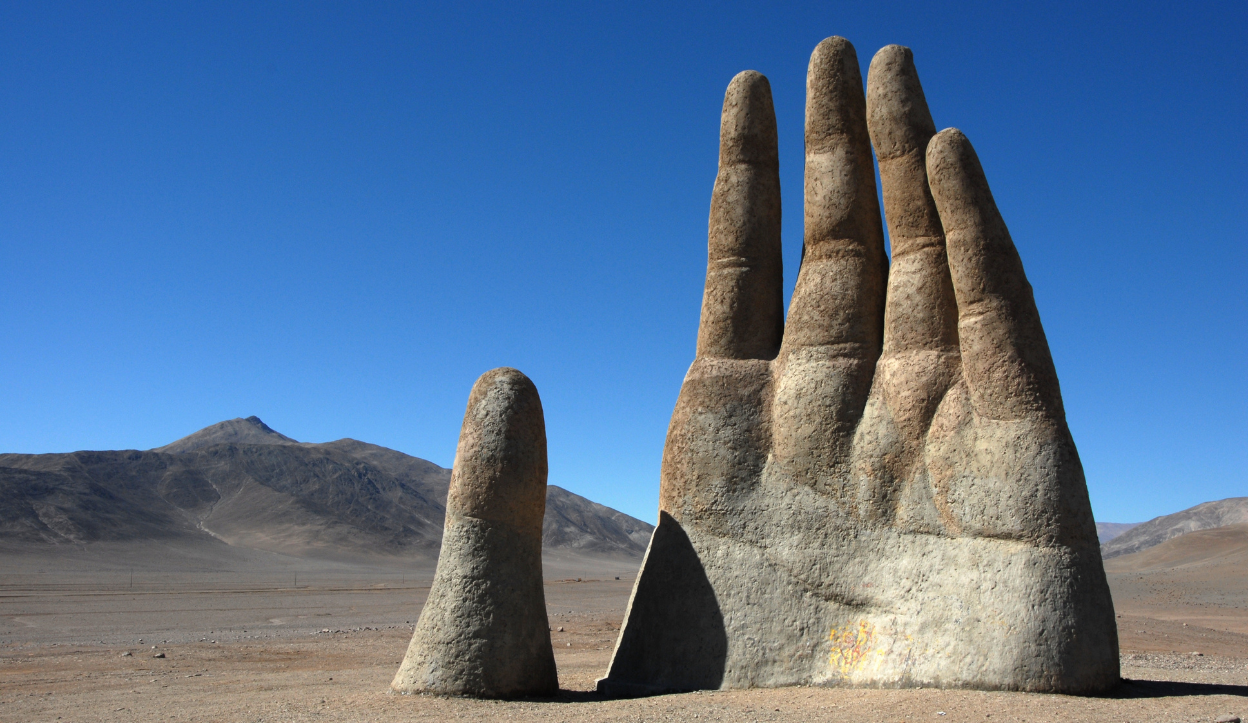Atacama Desert Travel Guide: Everything To Know Before You Go
In this guide you will discover everything you need to know to help you plan your visit to the Atacama Desert.

If you're dreaming of a trip packed with otherworldly landscapes, ancient history, and jaw-dropping natural wonders, the Atacama Desert absolutely needs to be on your list. In this Atacama Desert Guide you will discover everything you need to know about the landscape, history, attractions, best time to go, and more.
So, let's dive right in and discover this incredible Chilean desert.
What's Visiting Atacama Desert Like?
From the first moment you set eyes on its endless salt flats, deep red canyons, and surreal lagoons, you’ll understand why travelers from around the world are drawn to this remote slice of northern Chile.
The Atacama Desert isn’t just dry — it's the driest non-polar desert on Earth, with some regions that haven’t seen rain for hundreds of years! But it’s far from empty. Ancient cultures, colorful wildlife, and some of the clearest night skies on the planet make it a dream trip for adventurers, photographers, and curious souls alike.
Not A Member? ✈️
Save 40%-95% On Flights With Jetsetter Alerts Airline Mistake Fare & Flash Sales Alerts!
Atacama Desert History
The Atacama Desert sits between the Andes mountains and the Chilean Coast Range, stretching over 600 miles. Its extreme dryness is thanks to a triple-whammy of rain shadows from both mountain ranges and the cold Humboldt Current that runs offshore. Over millions of years, this created a truly unique environment — a desert so dry that parts of it mimic conditions found on Mars!
Ancient civilizations have called this desert home for thousands of years. Petroglyphs, abandoned villages, and ancient pathways tell stories of traders and settlers who adapted to this harsh environment long before modern roads and vehicles arrived. Today, remnants of these cultures can still be explored alongside the desert’s natural marvels.
Why Visit the Atacama Desert?
- Out-of-this-world scenery — From the cracked salt flats of Salar de Atacama to the surreal shapes of Valle de la Luna (Valley of the Moon), the desert landscapes here look like they belong on another planet.
- Incredible stargazing — Thanks to its high altitude, almost non-existent rainfall, and lack of light pollution, the Atacama Desert offers some of the clearest night skies in the world. It's a dream location for stargazers and photographers.
- Wildlife encounters — The desert is home to flamingos, vicuñas, foxes, and even curious desert lizards, proving life finds a way even in the driest places.
- Ancient culture and history — Explore the legacy of indigenous Atacameño people through archaeological sites, ancient fortresses like Pukará de Quitor, and the charming adobe town of San Pedro de Atacama.
- Natural hot springs and geysers — Watch the sunrise over the steam of the El Tatio Geysers or soak away the dust in the thermal pools of Puritama.
- Epic adventure opportunities — Whether you're sandboarding massive dunes or hiking active volcanoes, adventure is everywhere.
Things to Do in the Atacama Desert
- Explore Valle de la Luna — Wander through bizarre salt formations, climb giant sand dunes, and watch the sunset light up the desert in pinks and golds.
- Visit Salar de Atacama — Walk across a seemingly endless salt crust and see flamingos feeding in colorful lagoons.
- Stargaze at Observatorio ALMA — Visit one of the world's top observatories, or simply lay under the mind-blowing desert night sky.
- See the El Tatio Geysers — Wake up early and bundle up to watch the morning light hit columns of steaming water.
- Swim in Laguna Cejar — Float in salt-saturated waters surrounded by pure desert — an unforgettable sensation.
- Explore San Pedro de Atacama — Shop for colorful woven goods, sip a pisco sour, and enjoy the slow pace of desert life.
- Hike through Rainbow Valley — Marvel at mineral-streaked hills in bright reds, greens, and yellows.
- Sandboard in Death Valley — Race down massive dunes with panoramic desert views all around.
Best Areas To Stay Near The Atacama Desert
When travelers head to the Atacama Desert, there are a few main towns that serve as the base for exploring. Most visitors stay in or around San Pedro de Atacama, but there are also some smaller, less-touristed towns depending on the style of trip you want.
Main Base
- San Pedro de Atacama
This is the hub for visiting the desert. It’s a small oasis town with adobe buildings, dusty streets, and plenty of hotels, hostels, restaurants, and tour operators. From here, you can easily access Valle de la Luna, El Tatio Geysers, the salt flats, and the high-altitude lagoons.
Other Options Nearby
- Toconao
A quiet village about 30 minutes south of San Pedro. Known for its orchards and handicrafts, it’s less touristy but still close enough for day trips. Great for travelers who prefer a slower pace. - Calama
This mining city is where the main airport (El Loa Airport) is located, about 1.5 hours from San Pedro. Most people only stay a night here for logistics—it’s not as charming but has big hotels, shopping, and services. - Socaire
A small highland village on the way to the altiplano lakes. Some adventurous travelers stop here for its traditional Atacameño culture, but facilities are limited.
👉 Most travelers stay in San Pedro de Atacama, since it has the best infrastructure and access to guided tours. Toconao is a quieter alternative, while Calama is more of a transit stop than a destination.
Best Time of Year To Visit Atacama Desert
The best time to visit the Atacama Desert really depends on what you want out of your trip, but generally the shoulder seasons of March–May (autumn) and September–November (spring) are ideal.
Here’s a breakdown:
- Spring (September–November)
Days are pleasantly warm and nights are not as cold as winter. This is one of the best times to go if you want comfortable weather for exploring the Valle de la Luna, geysers, and salt flats. - Autumn (March–May)
Similar to spring—great balance of mild daytime temperatures and cool nights. Fewer crowds compared to peak season, so it’s a good time for budget-conscious travelers. - Summer (December–February)
This is the warmest time of year, but it’s also when the Bolivian winter (seasonal rains) can hit the altiplano. Rain isn’t heavy in San Pedro de Atacama itself, but nearby highland routes (to Uyuni, for example) can be affected. - Winter (June–August)
Expect sunny days but very cold nights—sometimes below freezing. Stargazing is excellent in winter thanks to the crisp, dry skies, though you’ll need to pack warmly.
👉 Best overall: If you’re after comfortable weather, fewer crowds, and reliable conditions, March–May and September–November are the best times to visit the Atacama Desert.
More Chile Travel Articles
Not A Member? ✈️
Save 40%-95% On Flights With Jetsetter Alerts Airline Mistake Fare & Flash Sales Alerts!
